The Fugger family dynasty began in the mid-14th century with a modest textile business in the Swabian town of Augsburg. Over the next two hundred years the family amassed one of the greatest fortunes of all time. Through banking and mining interests they acquired the wealth and assets of the Florentine House of Medici and exerted great influence over the Holy Roman Empire and the royal courts of Europe. Like the Medici, the Fuggers were also significant patrons of the arts during the Renaissance.
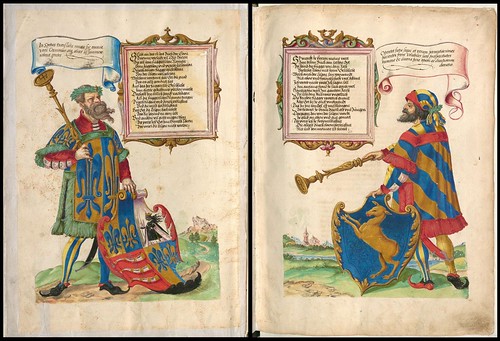


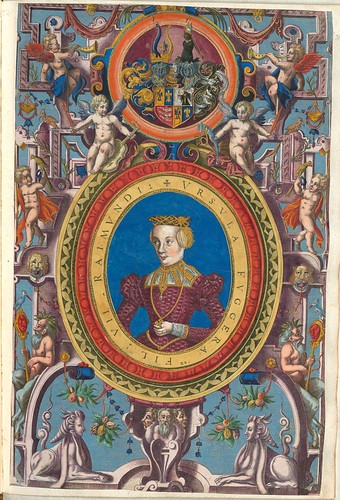
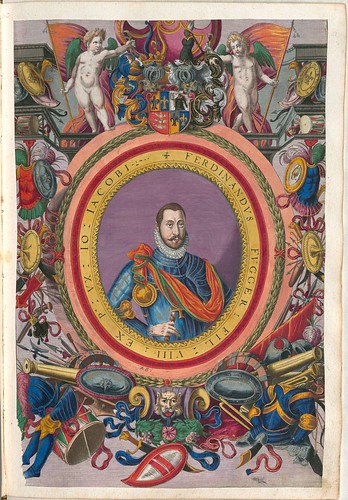


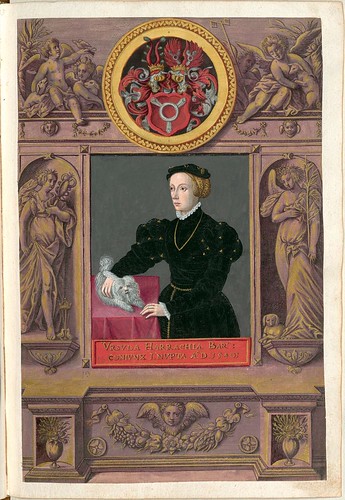
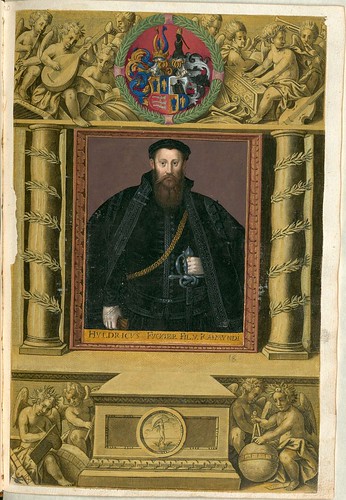
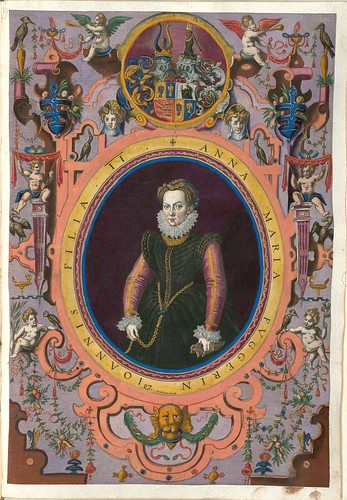
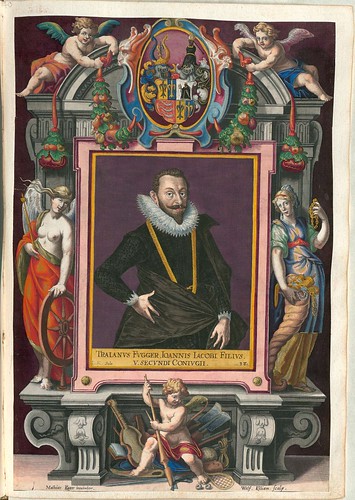
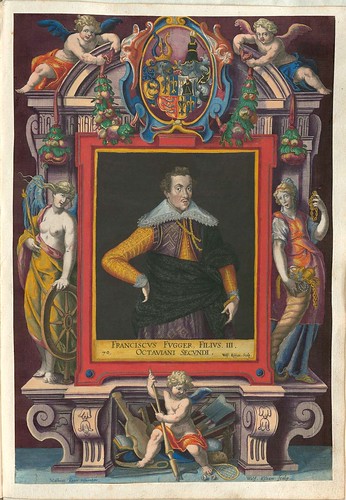
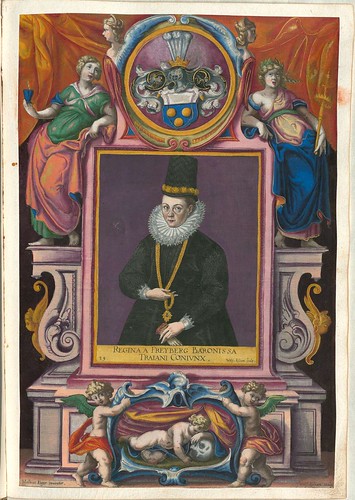
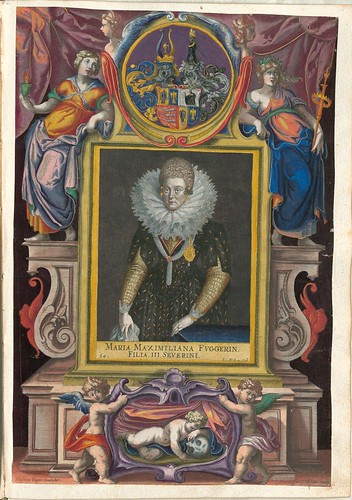
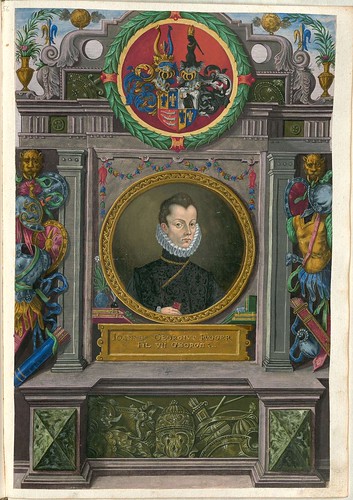
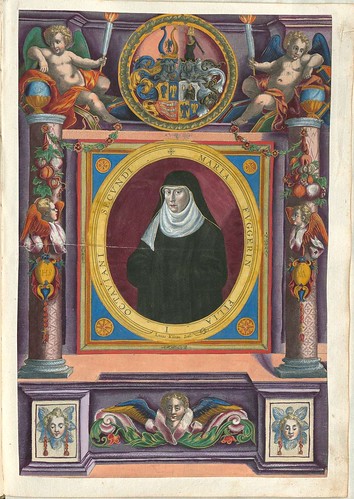
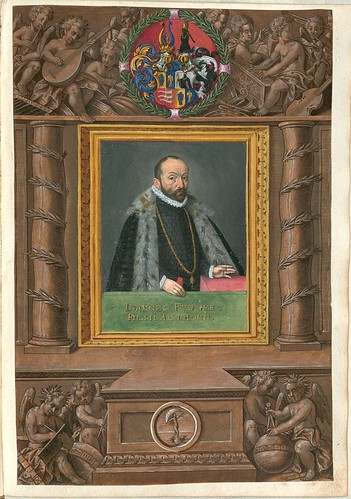
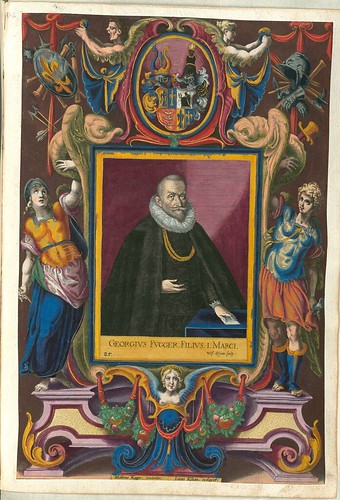
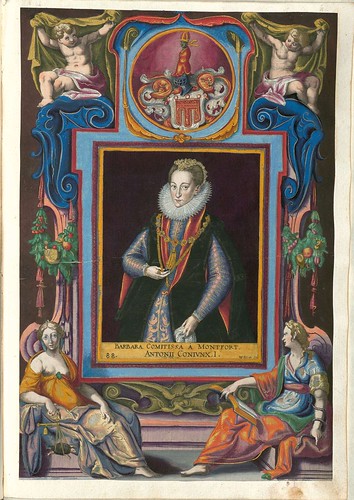
The Fugger family history, going back to the 1300s, was documented pictorially in two manuscripts from different time periods, displaying the crests, family trees and portraits of family members.
The first manuscript - the 'Geheimes Ehrenbuch' (secret book of honour) - was produced by the Augsburg painter, Jörg Breu, in the late 1540s and is a unique genealogical document in German language history. (double page images up top)
The second book, also produced in Augsburg (1593-1618), contains elaborate hand-coloured engravings featuring a parade of Renaissance motifs (grotesques, fruit garlands, scientific allusions and the like) for a deluxe limited edition issued to family members. Title: 'Fuggerorum. et Fuggerarum. Quae in familia natae. Quaève in familiam transiervnt. Quot extant aere expressae imagines'.
The Fugger family manuscripts are available from Bayerische Landesbibliothek Online in both regular browsing format and 3-D Java (turn-the-page by any other name) displays. The landing page is in English. An exhibition of these works will be held at the Bavarian State Library in March to May 2010.
- The Fugger family at Encylopedia Britannica.
- http://www.fugger.de/ (multiple languages)
- The Wealthy Fuggers (Regio-Augsburg Tourism).
- Portrait of Jacob Fugger 'the Rich' (1459-1525) by Albrecht Dürer and by Hans Burgkmair.
- B&W series of 'Fuggerorum et Fuggerarum' (and a few other portraits) at NYPL.
- 'In This Picturesque Village, the Rent Hasn't Been Raised Since 1520 - Tenants in German Enclave Pray Daily, For Good Fortune and the Souls of Bankers' by Mike Esterl (WSJ 2008).
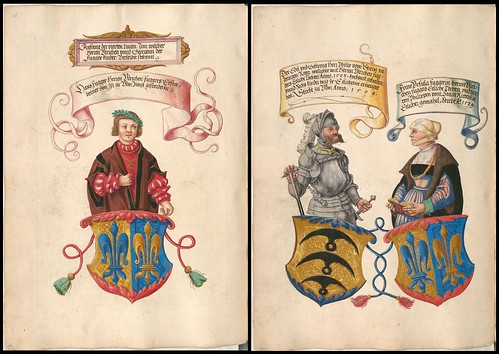



















15 comments :
A brilliant post but the headline
is spectacular
wow! could your blog be more interesting? i think not. glad i found you last week. i like regina fugger. she's got the mad harajuku style! thanks, love kitty!
The preservation of the colors, especially on the latter book, is amazing. You'd think the ink was still wet.
YEAH! I agree! The colours are spectacular.
Magnificent!
Very nice images. Judging from the facial expressions in most of the images apparently money really can't buy happiness. If you're ever in Augsburg Germany, a visit to the Fuggerei is definitely worth your time.
Thanks once again. As we all agree history is culture, knowledge, actuallity and great joy.
Ha, I saw that "medieval balloon boy & parents" insertion! (What a relief to be back where the humor is intentional and if someone says the Bayeux Tapestry is about Moses, there's some clever reason for it.)
The Fug Girls, Heather and Jessica, might have something to say about these Fugger's fashion styles!!
"There's was a Fugger dynasty in Swabia in the 14th century."
"What's Swabia? Do they make q-tips or something?"
Those shapes on the shields in the second image look remarkably similar to some Freemason marks that are drawn using a grid that derives from the golden section – is there any connection?
The logical answer is: Fuggers essentially pre-date the freemasons. That might not be the complete answer and it's easily conceivable that the symbols are shared between groups/ideologies or arose independently. Escutcheons / shields / crests also seem to be a rich compendium of historical symbols and either include the majority of human glyphs or were the inspiration for many more.
Or: I don't know!
You're using my lines on the "I don't know" material... the frequency with which I'm asked some perfectly reasonable but got-me-stumped question is something like once a week now. People who claim it's enough to know more than your students haven't thought how many questions there are out there to ask.
Of course, the more we know, the more we know we don't know.
Hee! Now I feel completely lame having used the same title after finding and posting this.
Heh. I saw. I debated saying something but thought I'd let it slide ;-)
Post a Comment
Comments are all moderated so don't waste your time spamming: they will never show up.
If you include ANY links that aren't pertinent to the blog post or discussion they will be deleted and a rash will break out in your underwear.
Also: please play the ball and not the person.
Note: only a member of this blog may post a comment.